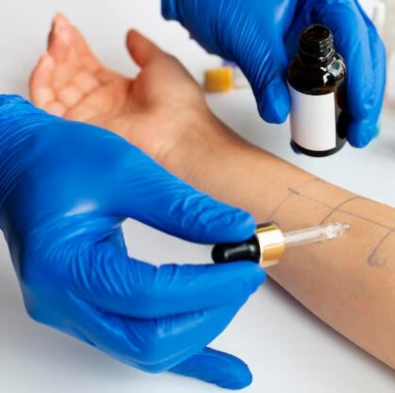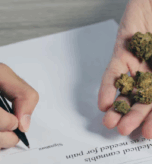Understanding the Basics: MDD vs. Bipolar Depression

Depression isn’t a one-size-fits-all condition.
Two of the most commonly confused mood disorders are Major Depressive Disorder (MDD) and Bipolar Depression—and while they share some symptoms, they are fundamentally different in important ways.
Why does this distinction matter?
Because the correct diagnosis directly impacts treatment options, recovery time, and quality of life.
What Is Major Depressive Disorder (MDD)?

Major Depressive Disorder, often simply called depression, is characterized by persistent, long-term feelings of sadness, hopelessness, and loss of interest in activities once enjoyed.
Common Symptoms of MDD:
- Persistent low mood lasting most of the day, nearly every day
- Fatigue, even after adequate sleep
- Changes in appetite and weight
- Difficulty concentrating or making decisions
- Feelings of worthlessness or guilt
- Sleep disturbances (too little or too much)
- Thoughts of death or suicide
MDD is continuous.
There are no periods of “high energy” or extreme elation—just a steady presence of depressive symptoms that can last weeks, months, or even years if untreated.
What Is Bipolar Depression?

Bipolar disorder is marked by episodes of depression that alternate with periods of elevated mood—called mania or hypomania.
When someone with bipolar disorder experiences depression, it looks almost identical to MDD.
But the presence of manic or hypomanic episodes is what sets bipolar depression apart.
Common Symptoms During Bipolar Depression:
- Persistent sadness and low energy
- Loss of interest in favorite activities
- Physical slowing or agitation
- Feelings of guilt, hopelessness, or emptiness
- Sleep and appetite disruptions
However, people with bipolar disorder also experience:
- Mania (high-energy, euphoric, risky behavior)
- Hypomania (less intense versions of mania, but still noticeable shifts in mood and energy)
Key Differences Between MDD and Bipolar Depression

| Feature | Major Depressive Disorder (MDD) | Bipolar Depression |
| Mood Patterns | Chronic low mood only | Alternating depression and mania/hypomania |
| Energy Levels | Consistently low | Can fluctuate dramatically |
| Behavior Changes | Withdrawal, slowed behavior | Risky, impulsive, or hyperactive behavior during mania |
| Response to Antidepressants | Often helpful | Can trigger mania if misused |
| Diagnosis Timeline | Symptoms must last at least 2 weeks | Requires documentation of both depressive and manic/hypomanic episodes |
Why Correct Diagnosis Matters
Misdiagnosing bipolar depression as MDD is unfortunately common—and potentially dangerous.
Here’s why:
- Wrong treatment can worsen symptoms. Antidepressants alone, when given to someone with undiagnosed bipolar disorder, can trigger manic episodes or rapid mood cycling.
- Delay in proper care. Without the right mood-stabilizing treatments, patients with bipolar depression often endure years of emotional instability, relationship strain, and occupational challenges.
Early, accurate diagnosis saves time, pain, and often lives


Signs You Might Be Dealing With Bipolar Depression (Not Just MDD)
You may be dealing with bipolar depression if:
- You’ve experienced periods of unusually high energy or confidence, even if brief
- You’ve engaged in impulsive or risky behaviors (spending sprees, reckless driving, etc.)
- You require less sleep but still feel energetic during certain periods
- Your mood swings feel extreme or unpredictable
Standard antidepressants made your mood swings worse
Treatment Paths: MDD vs. Bipolar Depression
Effective treatment depends heavily on getting the right diagnosis first.
- Antidepressants (SSRIs, SNRIs)
- Therapy (Cognitive Behavioral Therapy, Interpersonal Therapy)
- Lifestyle interventions (exercise, sleep hygiene, nutrition)
- Alternative therapies (e.g., ketamine therapy for treatment-resistant depression)
- Mood stabilizers (lithium, lamotrigine)
- Atypical antipsychotics (quetiapine, lurasidone)
- Carefully managed antidepressants (only in specific cases, and always paired with a mood stabilizer)
- Therapy focused on mood regulation and coping skills
Frequently Asked Questions (FAQs)
No, but some individuals initially diagnosed with MDD are later found to have bipolar disorder once a manic or hypomanic episode emerges.
Bipolar depressive episodes can last weeks to months but tend to fluctuate more than MDD, which often feels persistently steady.
Sometimes, but only when used alongside a mood stabilizer to prevent triggering mania.
Bipolar disorder has strong genetic components but can also be influenced by trauma, stress, and chemical imbalances in the brain.
No—mania is more intense and often requires hospitalization, while hypomania is less severe but still a noticeable shift in mood and energy.
Yes, some individuals can go months or even years without a manic episode, making diagnosis tricky.
It often emerges in late adolescence or early adulthood but can sometimes present later.
Emerging evidence suggests that ketamine, under careful medical supervision, may offer relief for bipolar depression—especially for those who haven’t responded to traditional treatments.
Encourage professional care, maintain open communication, and learn about the condition to better understand their experience.
Most states require renewal every 6 to 12 months. Your doctor may also schedule follow-ups to adjust your dosage or treatment plan based on your progress.
Here’s the final closing section, keeping perfectly in tune with the patient-centered, hopeful, and professional voice you want—just like your references:
Final Thoughts: Know the Difference, Find the Right Path

Depression may be common—but every type of depression demands a different roadmap to healing.
Understanding whether you’re dealing with Major Depressive Disorder or Bipolar Depression is not just a technicality—it’s the difference between suffering and true recovery.
Getting the right diagnosis is the first powerful step toward real stability, emotional freedom, and a better quality of life.





